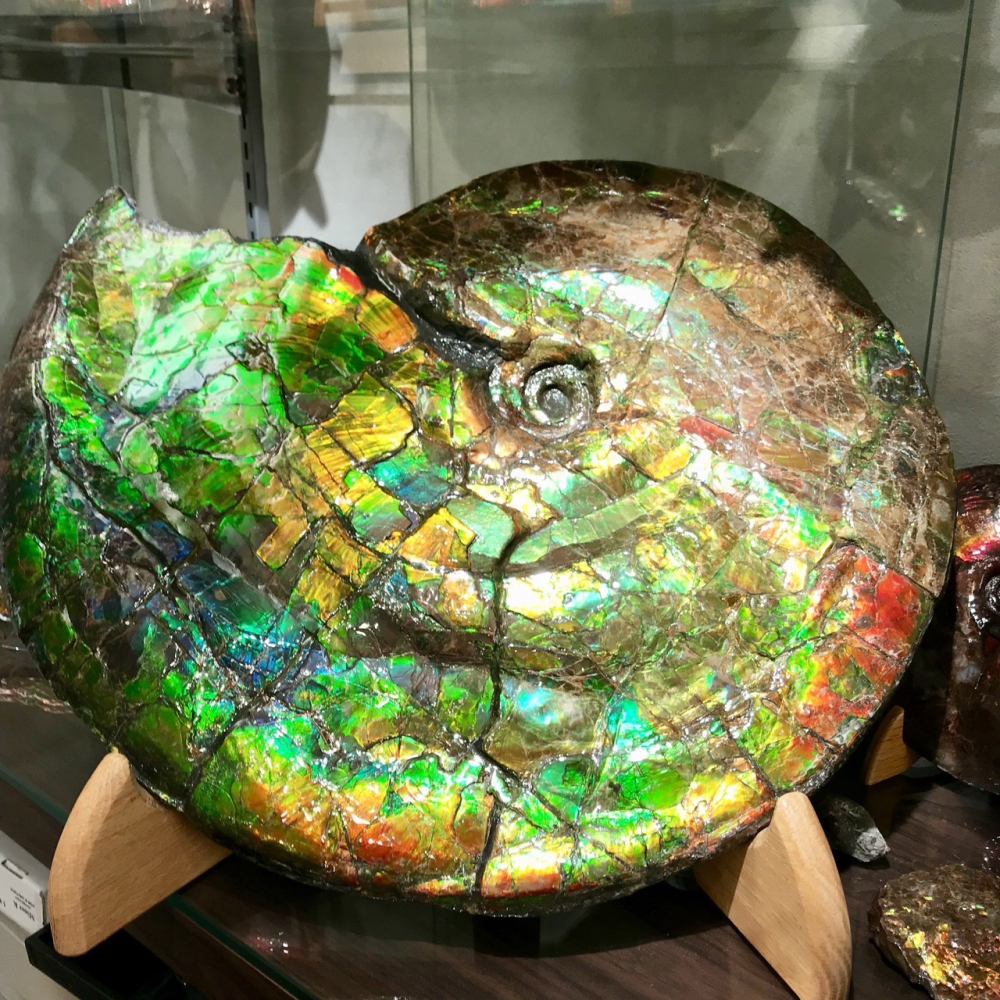At IFLScience, we often like to talk about the Mantelpiece Of Dreams, a line-up of rare geological trinkets we’d like to shine down on us as we sit on the sofa (were it not for, you know, ethics). London Natural History Museum’s Professor Paul Barrett said he’d like a triceratops skull (nice), our own Eleanor Higgs dreams of a megalodon tooth, but for me? I’ve always been partial to ammolite.
The rest of this article is behind a paywall. Please sign in or subscribe to access the full content.
This is a gemstone that stands out among other precious stones, being built upon the tissues of a once-living animal. They are rare fossilized ammonite shells that can range in color from fairly muted to a dazzlingly vivid display of greens, blues, oranges, and yellows. As for what makes them so fancy? Well, we may have just found out.
A new study has become the first to experimentally evaluate the vivid colors locked within ammolite gemstones. We know that they are located within layers of preserved nacre, sometimes better known as “mother of pearl”, something you can also find in animals alive today, like abalone.
Nacre itself is made up of aragonite, a kind of mineral that forms layered plates, with small amounts of organic material mixed in. Thing is, not all nacre-containing ammolite looks the same, so what sets apart the most dazzling of them all?

A truly remarkable gemstone, but don’t try and put it on a ring.
Image credit: Hiroaki Imai
To find out, a team led by Hiroaki Imai from Keio University in Yokohama, Japan, used electron microscopy and simulations to get a closer look at the structural and optical properties of vivid ammolite specimens retrieved from Alberta, Canada. They then compared the properties of these brightly colored gemstones to those of paler ammolite specimens collected in Madagascar, as well as the shells of abalone and nautiluses.
By looking at this spectrum of specimens, the researchers saw that the specimens all had stacked aragonite plates, but where they differed was in the thickness of those plates and the spaces between them. It seems the sweet spot for really vibrant ammolite is nacre made up of aragonite plates of equal thickness with uniform 4-nanometer-wide gaps between them – sort of like a really good croissant.
These air-filled gaps are crucial for producing vivid structural colors because they influence how light interacts with the layered nacre. Light waves reflect off each layer inside the structure, and when these reflected waves overlap, they can strengthen or weaken each other, something that’s known as interference. The specific way these waves combine produces an interference signal, which determines the color we see.
When the gaps between aragonite become smaller, the reflectance decreases, allowing light to travel deeper into the layers and reflect multiple times. With more layers contributing to interference, the resulting interference signal becomes narrower, creating a dazzling display of vivid color.
Make those layers of aragonite less consistent, or those gaps wider or completely absent, however, and you end up with a paler specimen. It could also be that the introduction of other organic materials between the aragonite plates influences the vibrancy too.
Not only have we sussed the recipe for spectacular ammolite, but the researchers suggest the findings could inspire new optical devices, or even non-fading colored paints. Crafts inspired by animals that lived hundreds of millions of years ago? That’s art attack.
The study is published in the journal Scientific Reports.
Source Link: What Makes Ammolite Gemstones, A Rare Kind Of Fossilized Ammonite, So Vibrant? It’s All In The Nacre